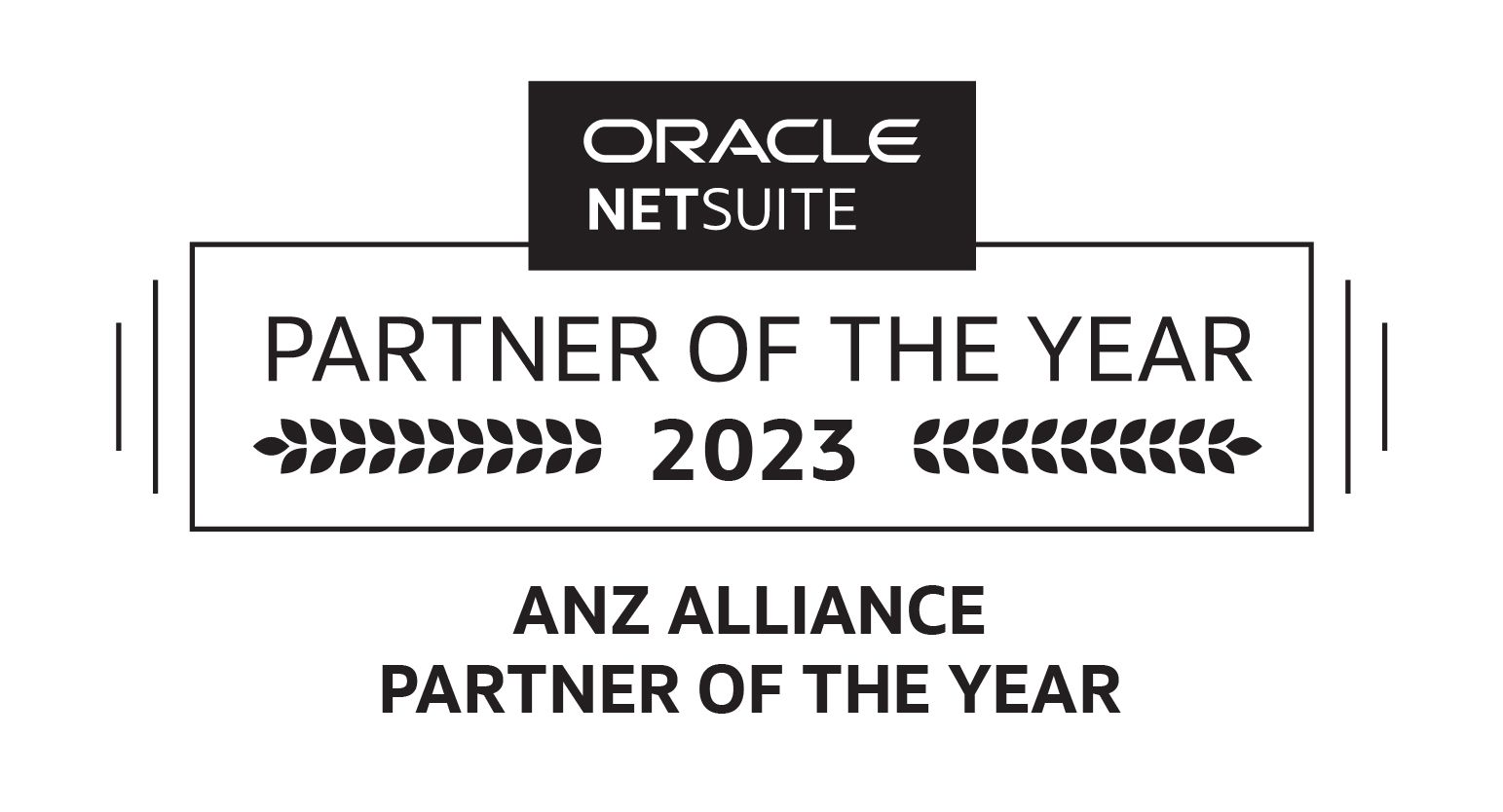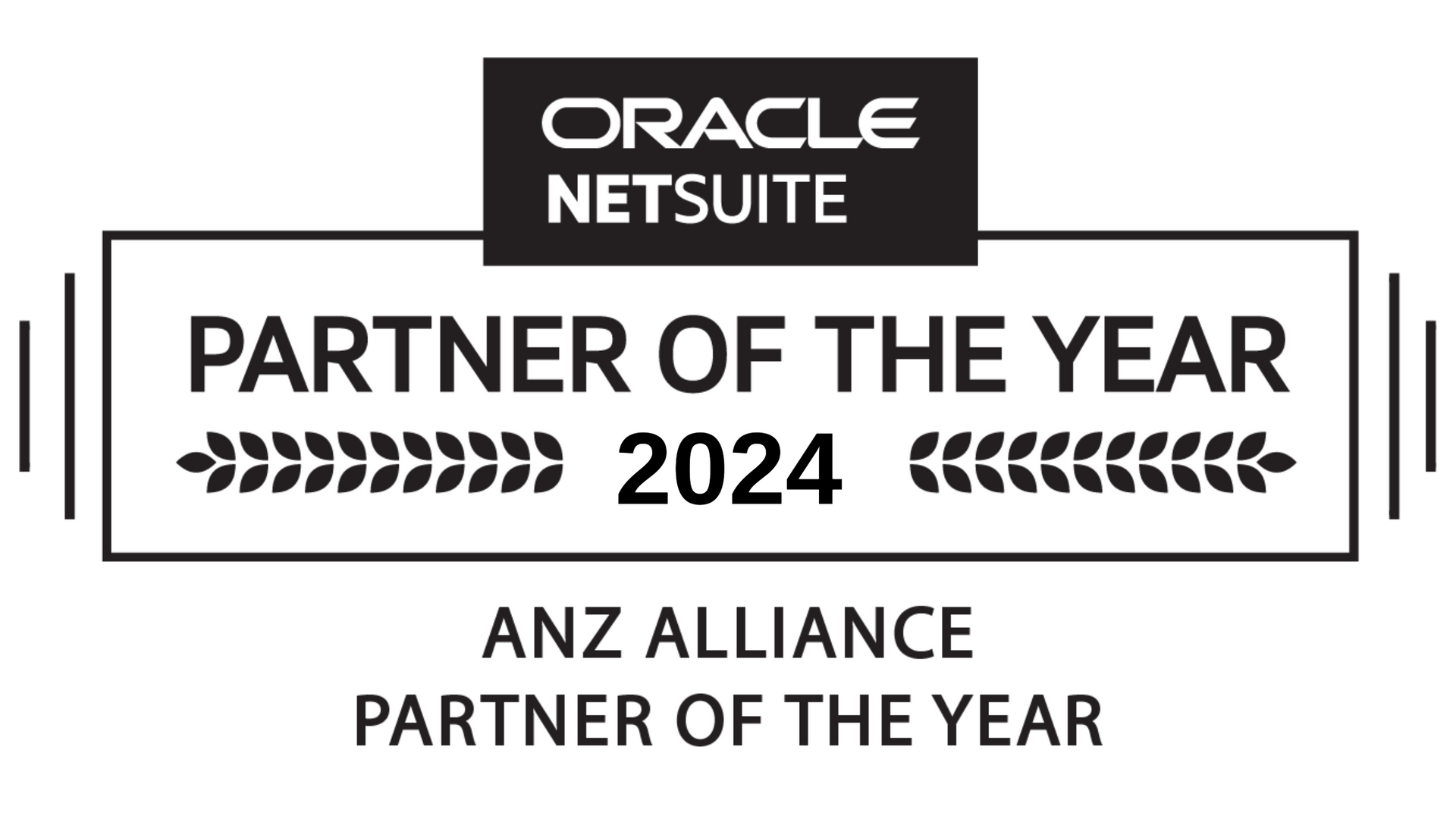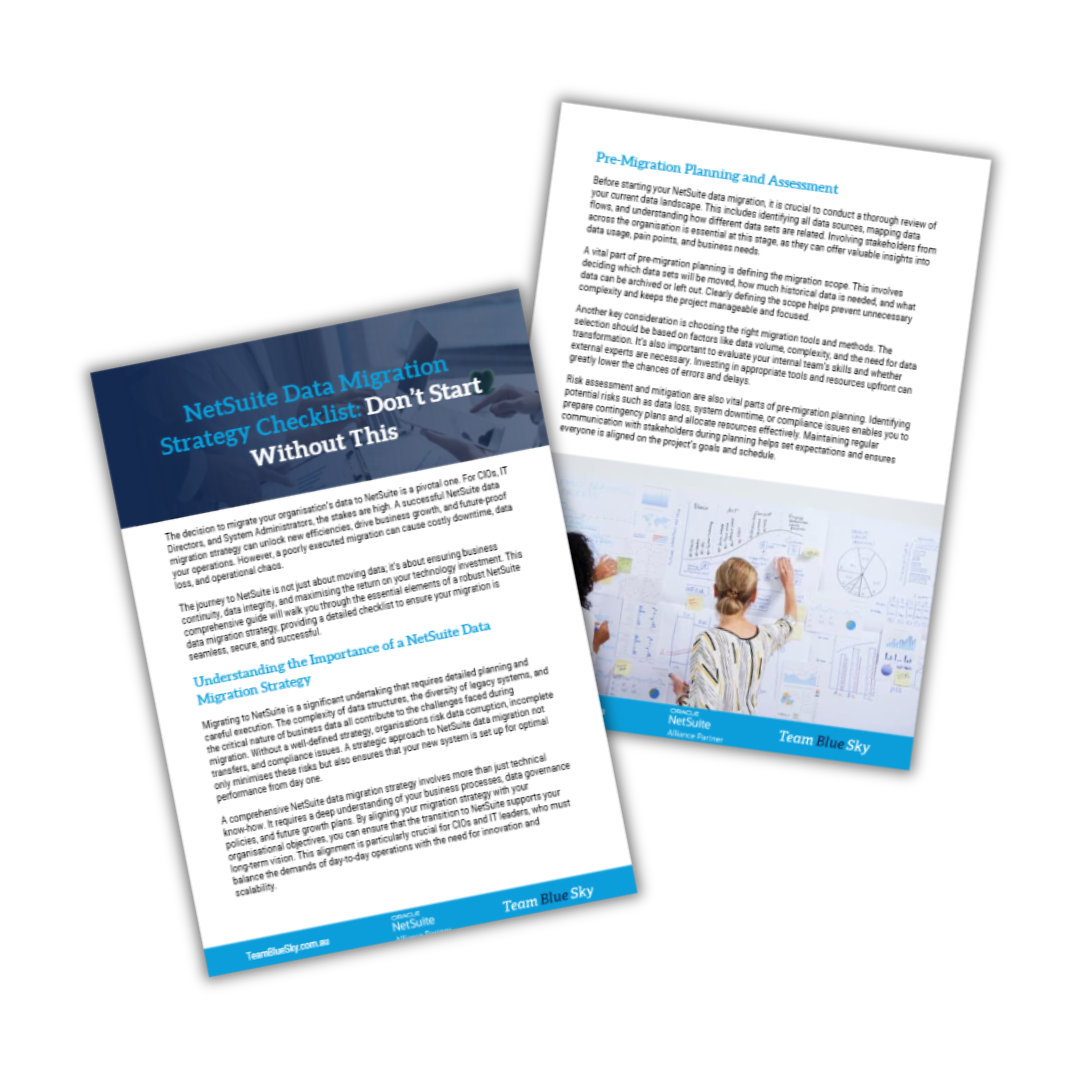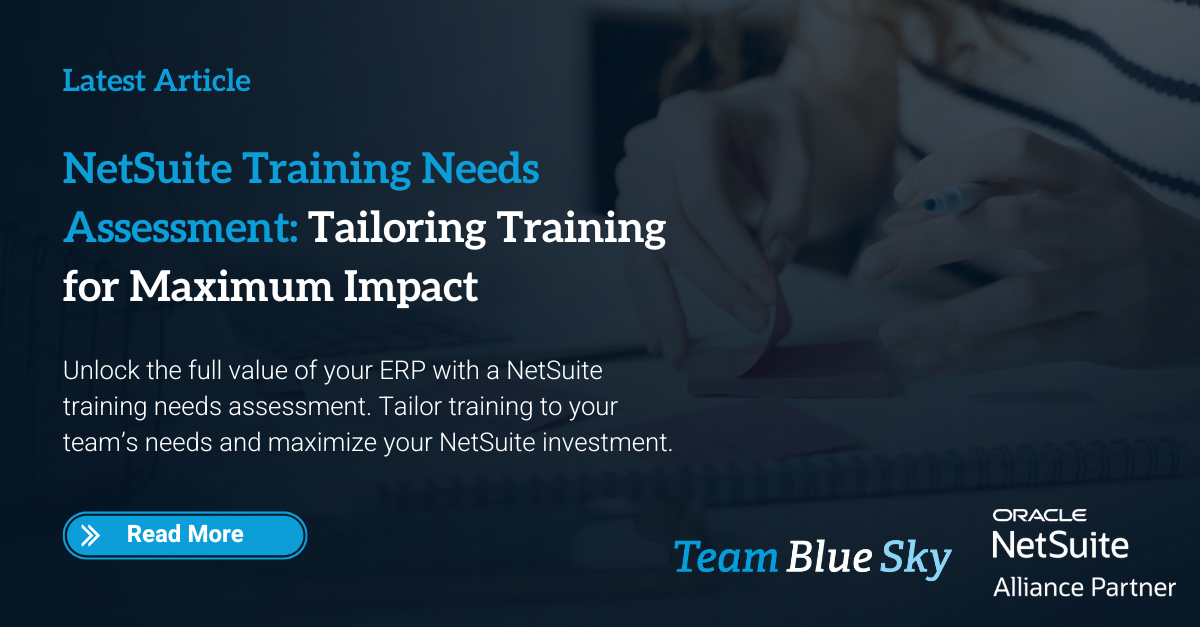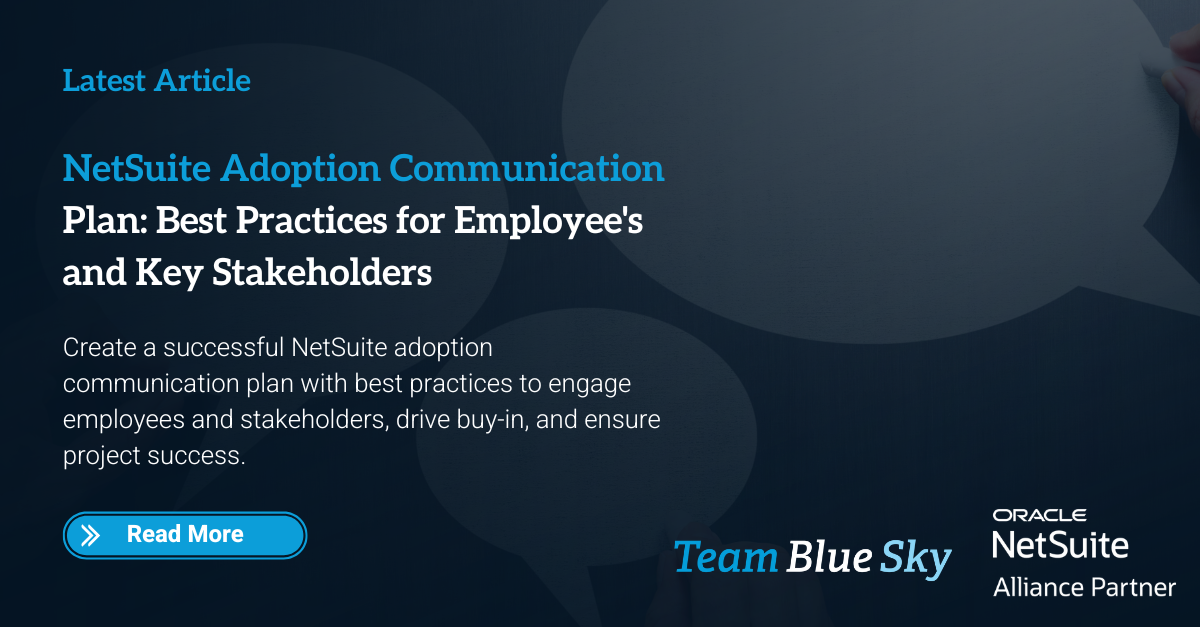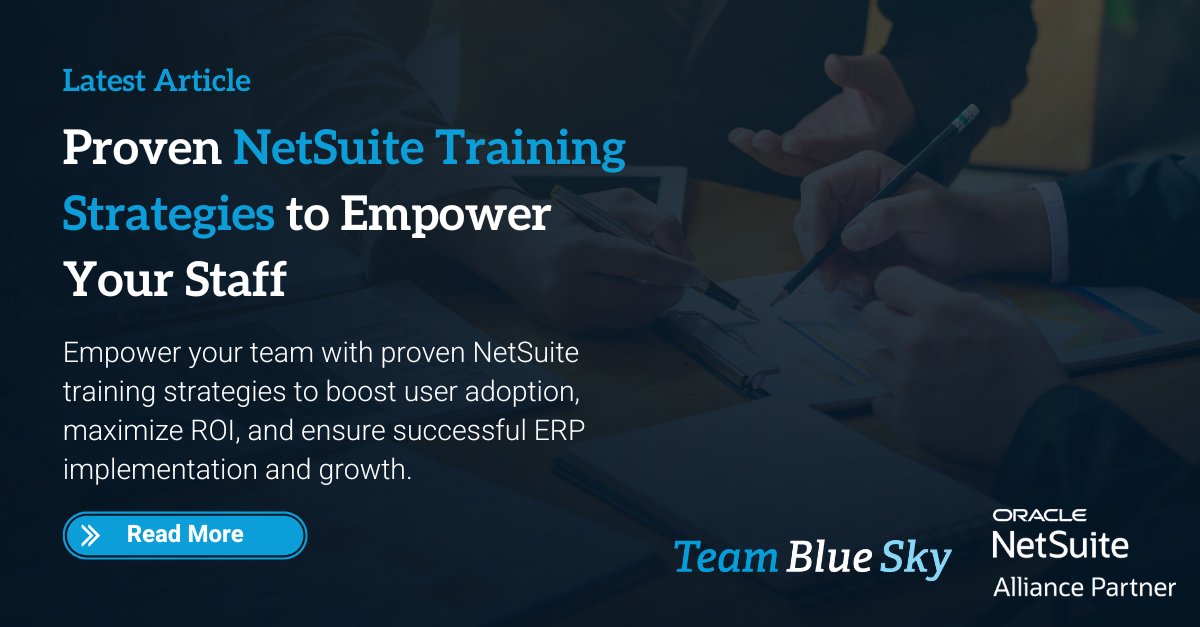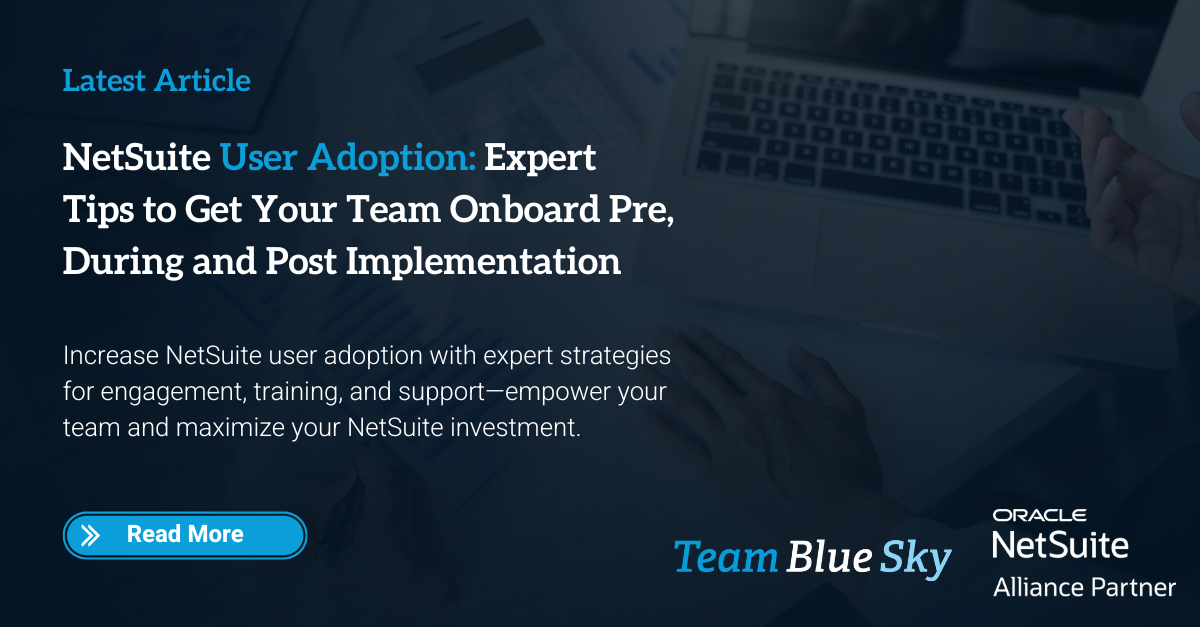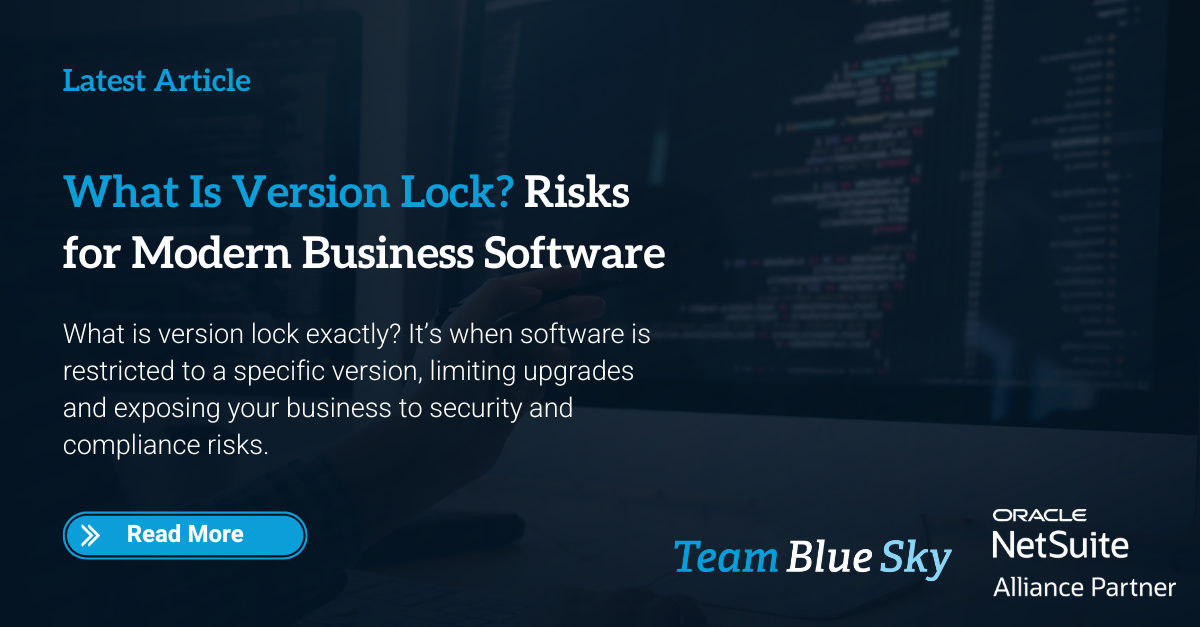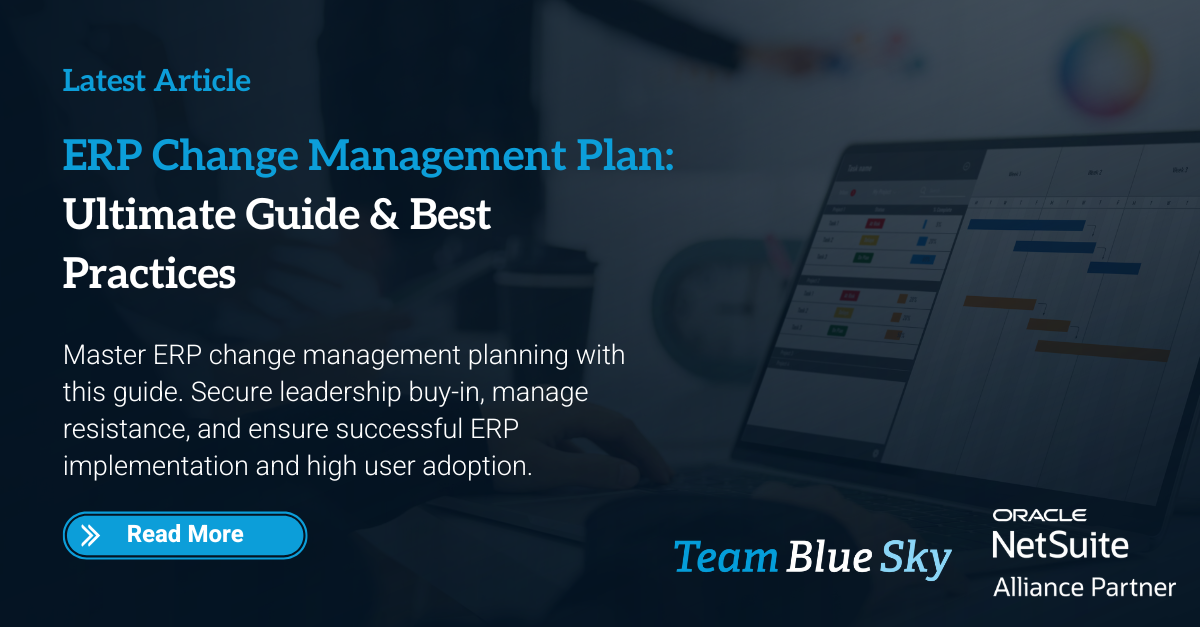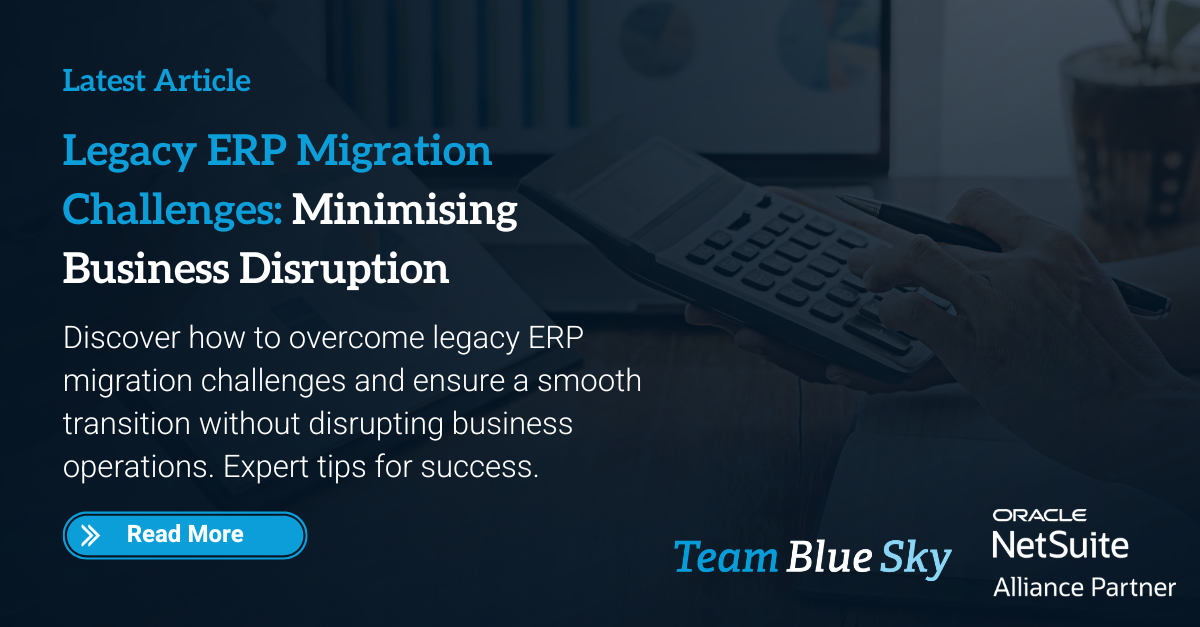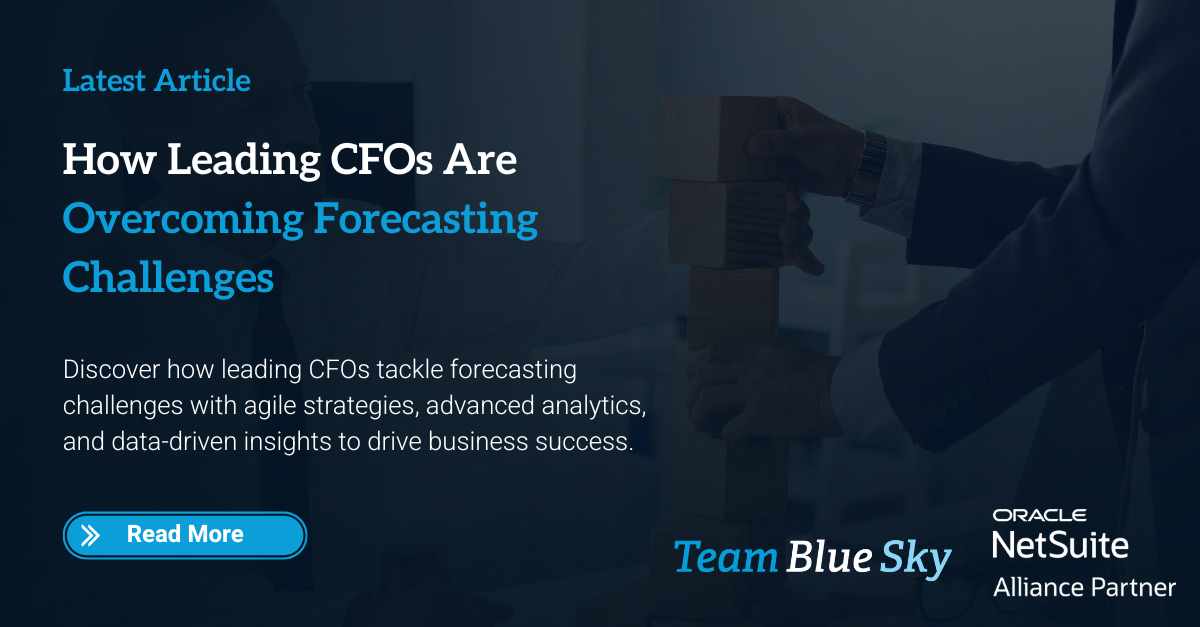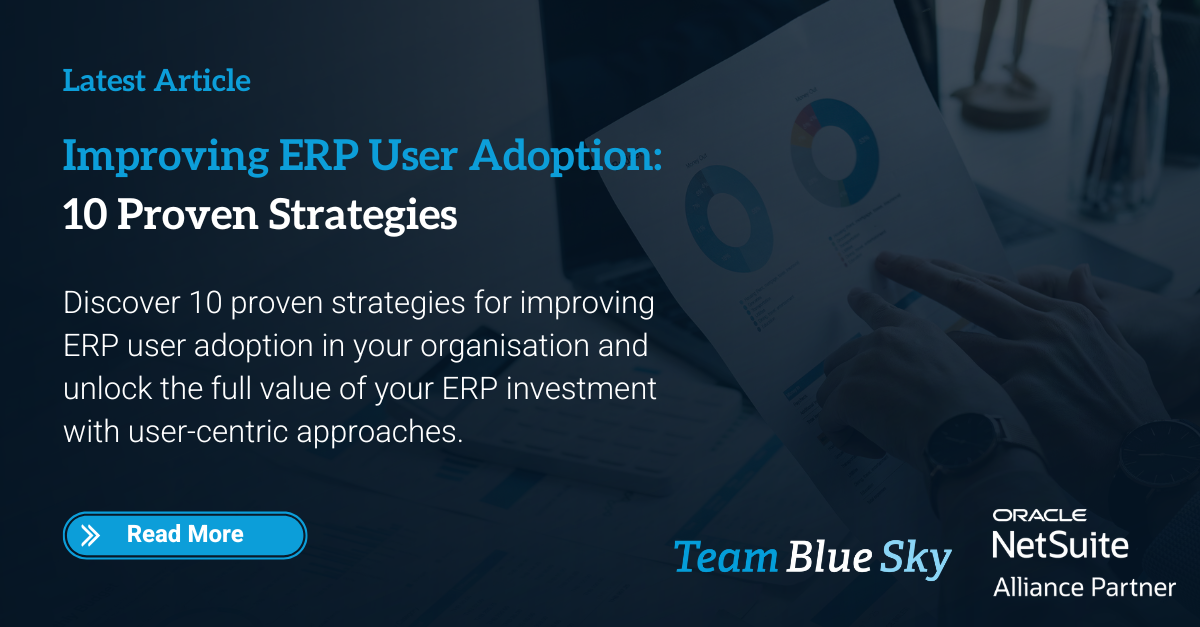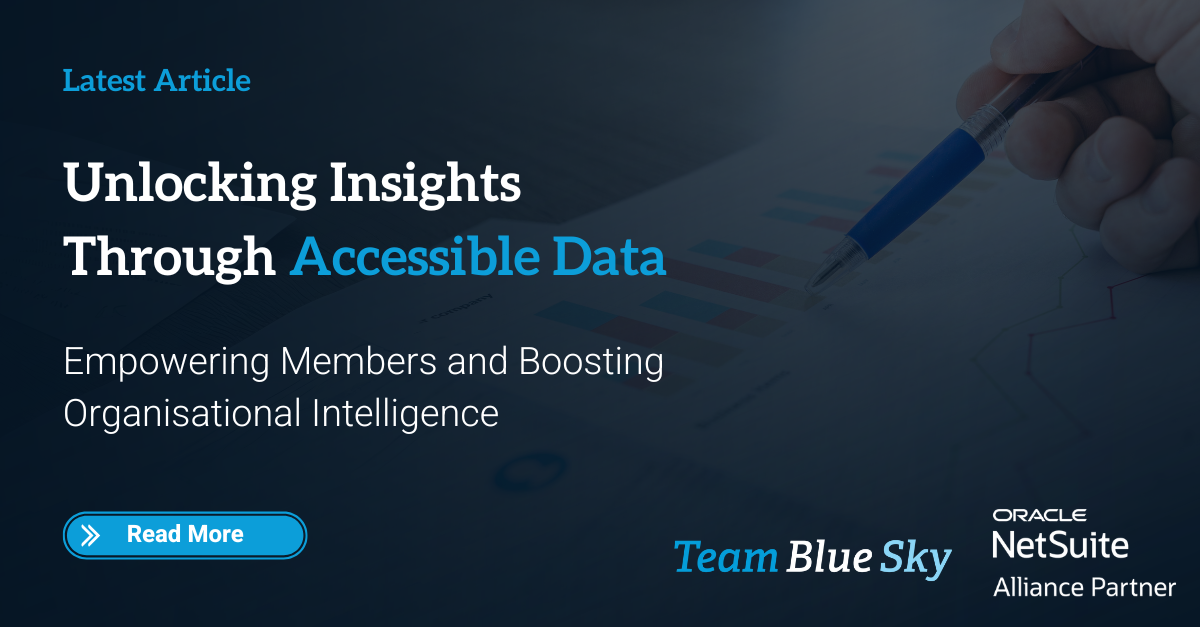NetSuite Data Migration Strategy Checklist: Don’t Start Without This
The decision to migrate your organisation’s data to NetSuite is a pivotal one. For CIOs, IT Directors, and System Administrators, the stakes are high. A successful NetSuite data migration strategy can unlock new efficiencies, drive business growth, and future-proof your operations. However, a poorly executed migration can cause costly downtime, data loss, and operational chaos.
The journey to NetSuite is not just about moving data; it’s about ensuring business continuity, data integrity, and maximising the return on your technology investment. This comprehensive guide will walk you through the essential elements of a robust NetSuite data migration strategy, providing a detailed checklist to ensure your migration is seamless, secure, and successful.
Understanding the Importance of a NetSuite Data Migration Strategy
Migrating to NetSuite is a significant undertaking that requires detailed planning and careful execution. The complexity of data structures, the diversity of legacy systems, and the critical nature of business data all contribute to the challenges faced during migration. Without a well-defined strategy, organisations risk data corruption, incomplete transfers, and compliance issues. A strategic approach to NetSuite data migration not only minimises these risks but also ensures that your new system is set up for optimal performance from day one.
A comprehensive NetSuite data migration strategy involves more than just technical know-how. It requires a deep understanding of your business processes, data governance policies, and future growth plans. By aligning your migration strategy with your organisational objectives, you can ensure that the transition to NetSuite supports your long-term vision. This alignment is particularly crucial for CIOs and IT leaders, who must balance the demands of day-to-day operations with the need for innovation and scalability.
Pre-Migration Planning and Assessment
Before starting your NetSuite data migration, it is crucial to conduct a thorough review of your current data landscape. This includes identifying all data sources, mapping data flows, and understanding how different data sets are related. Involving stakeholders from across the organisation is essential at this stage, as they can offer valuable insights into data usage, pain points, and business needs.
A vital part of pre-migration planning is defining the migration scope. This involves deciding which data sets will be moved, how much historical data is needed, and what data can be archived or left out. Clearly defining the scope helps prevent unnecessary complexity and keeps the project manageable and focused.
Another key consideration is choosing the right migration tools and methods. The selection should be based on factors like data volume, complexity, and the need for data transformation. It’s also important to evaluate your internal team’s skills and whether external experts are necessary. Investing in appropriate tools and resources upfront can greatly lower the chances of errors and delays.
Risk assessment and mitigation are also vital parts of pre-migration planning. Identifying potential risks such as data loss, system downtime, or compliance issues enables you to prepare contingency plans and allocate resources effectively. Maintaining regular communication with stakeholders during planning helps set expectations and ensures everyone is aligned on the project’s goals and schedule.
Cleansing, Validation, and Data Quality Checks
Data quality forms the backbone of a successful NetSuite implementation. Migrating flawed, incomplete, or duplicate data can weaken system performance and erode user trust. Conducting a thorough data cleansing process before migration helps identify and fix data quality issues. This includes removing duplicates, correcting errors, and standardising data formats.
Validation involves confirming that data complies with predefined quality standards and business rules. This process includes running validation checks on both source and target data sets to detect discrepancies and inconsistencies. Validation should be continuous throughout the migration, with regular checkpoints to ensure data quality remains high at each stage.
Reconciliation is the final step in maintaining data quality. It requires comparing data from the legacy system with data in NetSuite to confirm that all records have been accurately transferred. Any discrepancies must be investigated and resolved before going live. Reconciliation assures that the migration was successful and that the new system is ready for operation.
Involving business users in the data quality process is crucial. They offer valuable insights into data usage and can help identify issues that might not be obvious to technical teams. Regular communication and training foster user confidence and facilitate a smooth transition.
Managing Change, Communication, Training, and User Adoption
Successful data migration is more than a technical task; it is a change management effort that affects users throughout the organisation. Clear communication is essential for managing expectations, addressing concerns, and gaining support for the migration project. Regular updates on progress, timelines, and key milestones help keep stakeholders informed and engaged.
Training is vital for user adoption. Offering comprehensive training on the new NetSuite system ensures users are comfortable with the new processes and can fully utilise the system’s features. Training should be customised for different user groups, emphasising practical, hands-on learning.
User adoption ultimately determines migration success. Involving users early, seeking feedback, and addressing concerns help build buy-in and facilitate a smooth transition. Post-migration support, such as helpdesk services and ongoing training, further boosts user confidence and satisfaction.
Change management should be a core part of your NetSuite data migration plan. By focusing on communication, training, and user support, you can reduce resistance, minimise disruptions, and maximise the benefits of your new system.
Post-Migration Activities: Testing, Optimisation, and Continuous Improvement
The migration process doesn't end once data is transferred to NetSuite. Post-migration tasks are vital for ensuring the new system is fully functional and provides the expected benefits. Thorough testing should be performed to verify system performance, data accuracy, and functionality. This includes user acceptance testing, integration testing, and performance testing.
Optimisation involves fine-tuning the system to align with business needs and maximise efficiency. This might include configuring workflows, customising reports, or integrating with other business tools. Ongoing improvement should be a key part of your NetSuite plan, with regular reviews and updates to keep the system supporting your changing business needs.
Monitoring and support are also essential after migration. Setting up clear processes for resolving issues, maintaining the system, and assisting users helps ensure problems are quickly fixed. Regular communication with users and stakeholders can gather useful feedback and spot opportunities for further improvement.
Your NetSuite Data Migration Success Starts Here
Migrating to NetSuite is a transformative process that demands careful planning, execution, and ongoing management. By following a detailed NetSuite data migration strategy checklist, you can reduce risks, maintain data quality, and maximise the value of your new system. From pre-migration planning and data mapping to change management and post-migration optimisation, every step is vital to your success.
As a CIO, IT Director, or System Administrator, your leadership plays a crucial role in guiding your organisation through this complex journey. Dedicate the time and resources needed to develop a solid migration plan, involve stakeholders, and focus on data quality. The benefits—a more agile, efficient, and future-ready business—are definitely worth the effort.
Ready to move forward with your NetSuite journey? Begin by assessing your current data environment and crafting your migration plan today. For expert advice and support, contact a trusted NetSuite partner to ensure your migration is a great success.

Henry Sack
General Manager

With over 12 years of experience as a NetSuite implementation consultant, Henry Sack leads TeamBlueSky’s team of NetSuite and accounting experts in his role of General Manager.
TeamBlueSky is a leading Australian
NetSuite Alliance Partner whose mission is to provide critical
NetSuite BPO and
Payroll services to NetSuite clients who are wanting to simplify their
back office processes and partner with a leading
NetSuite administration expert.
TeamBlueSky have also partnered with global Suite Developer Network partners to offer local solutioning, implementation and support services for global NetSuite SuiteApps.


